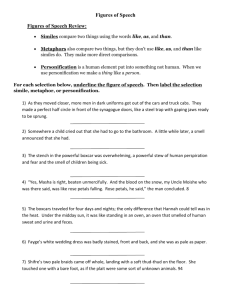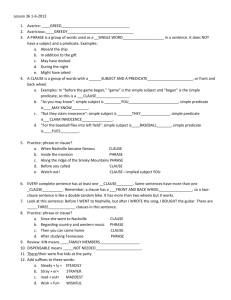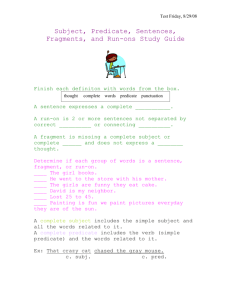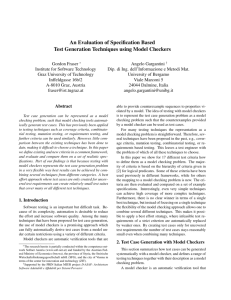Lecture 19 - Patrick Lam
advertisement
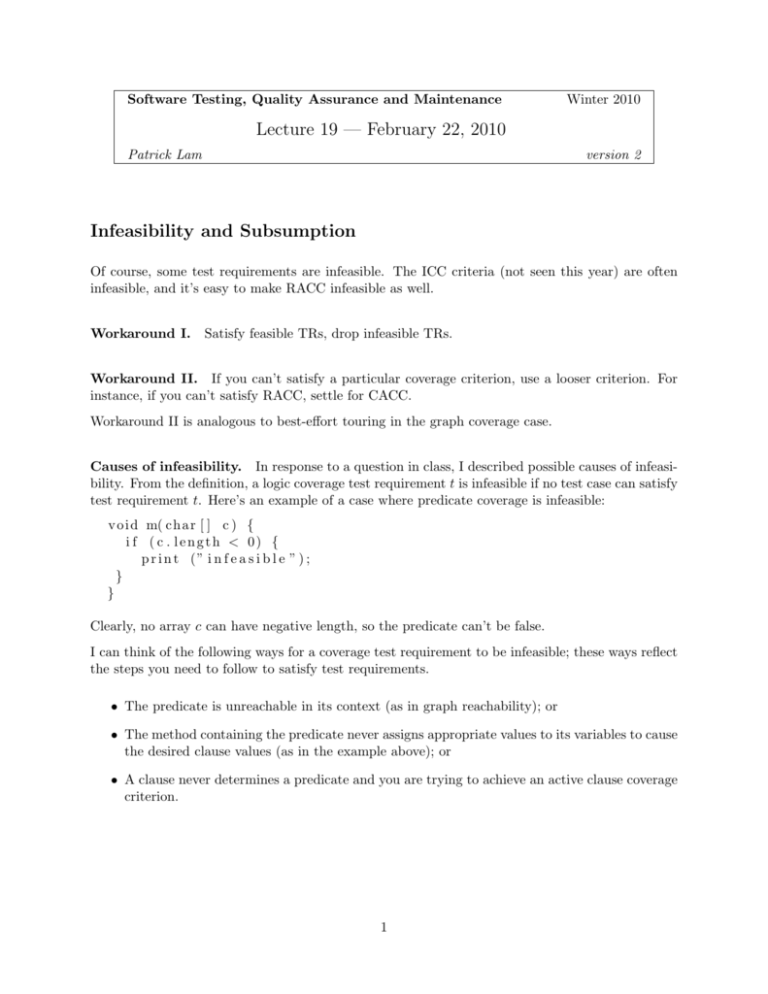
Software Testing, Quality Assurance and Maintenance
Winter 2010
Lecture 19 — February 22, 2010
Patrick Lam
version 2
Infeasibility and Subsumption
Of course, some test requirements are infeasible. The ICC criteria (not seen this year) are often
infeasible, and it’s easy to make RACC infeasible as well.
Workaround I. Satisfy feasible TRs, drop infeasible TRs.
Workaround II. If you can’t satisfy a particular coverage criterion, use a looser criterion. For
instance, if you can’t satisfy RACC, settle for CACC.
Workaround II is analogous to best-effort touring in the graph coverage case.
Causes of infeasibility. In response to a question in class, I described possible causes of infeasibility. From the definition, a logic coverage test requirement t is infeasible if no test case can satisfy
test requirement t. Here’s an example of a case where predicate coverage is infeasible:
v o i d m( c h a r [ ] c ) {
i f ( c . length < 0) {
p r i n t (” i n f e a s i b l e ” ) ;
}
}
Clearly, no array c can have negative length, so the predicate can’t be false.
I can think of the following ways for a coverage test requirement to be infeasible; these ways reflect
the steps you need to follow to satisfy test requirements.
• The predicate is unreachable in its context (as in graph reachability); or
• The method containing the predicate never assigns appropriate values to its variables to cause
the desired clause values (as in the example above); or
• A clause never determines a predicate and you are trying to achieve an active clause coverage
criterion.
1
Subsumption Chart
Without inactive clause criteria, we can simplify the subsumption chart in the book to:
Combinatorial
Clause Coverage
CoC
Restricted Active
Clause Coverage
RACC
Correlated Active
Clause Coverage
CACC
General Active
Clause Coverage
GACC
Predicate
Coverage
Clause Coverage
CC
PC
2
How to get Logic Coverage
To achieve logic coverage:
• identify the predicates p ∈ P in the program fragment under test;
• figure out how to reach each of the predicates;
• make c determine p (for the active clause criteria); and
• find values for (program) variables to meet various criteria.
We’ve seen how to make c determine p; let’s look at an example where we find values for variables
to meet the criteria.
Predicates.
We’ll use the following predicate, modified from the textbook example TestPat:
isPat == false && iSub + pL - 1 < sL || subject[iSub] == pattern[0]
We can assign names to these clauses, giving the symbolic predicate:
Reaching a Predicate. A CFG-based example:
Determination. We analyze the predicate and determine the conditions under which each clause
determines the predicate:
Mapping Values to Predicates. Now we need to find program values that correspond to different predicate values. isPat is a boolean variable, so it’s easy. The code says that pL and sL are
lengths of argument arrays, so we need to assign arrays such that iSub + pL - 1 < sL. Finally,
we can assign values to iSub and subject such that subject[iSub] is equal to or different from
pattern, as needed. Examples:
3
Coverage Criteria.
We now list the coverage criteria. For PC, we have:
CC:
CoC:
GACC:
(What are all of the ways to satisfy GACC?)
CACC: additional constraint that each pair must cause p to be both true and false.
RACC:
Concluding Comments on Logic Criteria. GACC doesn’t imply predicate coverage, but
often does when 3 or more terms are involved. RACC can be unsatisfiable. CACC seems to often
be “just right”.
4




